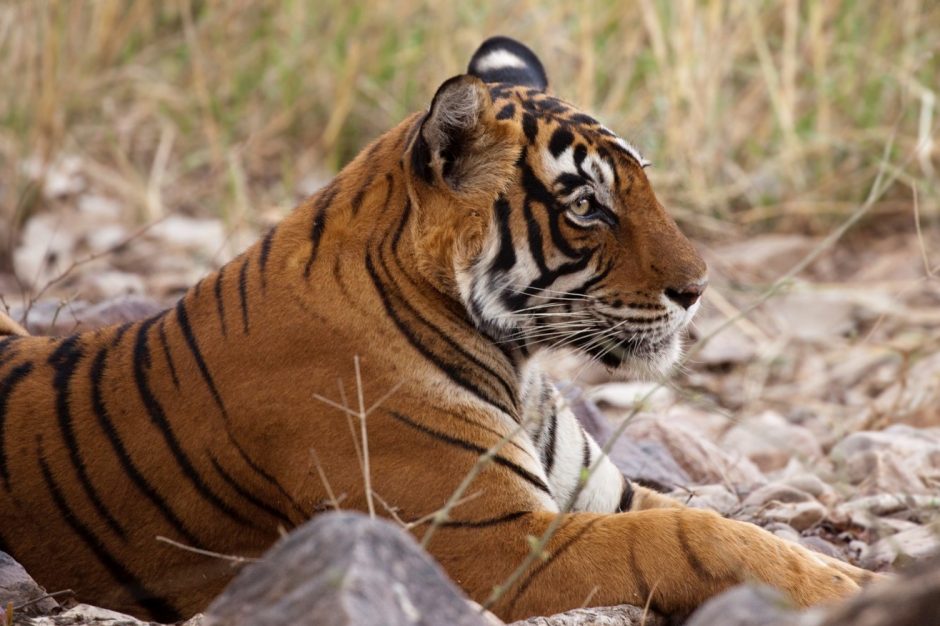
Stories from the Field – Tiger Photo Safari
The excitement was mounting greater with each minute that passed as we bumped along in our safari jeep into the interior of Ranthambore National Park. The scenery – stunning, the wildlife – mesmerizing, but we were here today for one reason…to observe and photograph the majestic and rare Bengal tiger.
Here, in Ranthambore, is one of the few remaining strongholds for wild tigers, along with several other of India’s National Parks in the central and northern part of the country. I certainly had high hopes for getting my very first glimpse of this elusive feline, but what I didn’t expect was the incredible beauty and intriguing scenery of this wild landscape that almost overshadowed our objective. It was as if I had stepped right into Jungle Book, as we zoomed under centuries-old stone arches, with iconic banyan trees overtaking the remnants of a past empire. As I gazed up into the hills around me, a fortress wall appeared high on the craggy peaks. I couldn’t help but mentally step back in time, thinking of the inhabitants of this former kingdom, contending with the harshness of the landscape, and having to always be watchful of the tigers that roam the jungle, because no doubt the tigers were watching them.
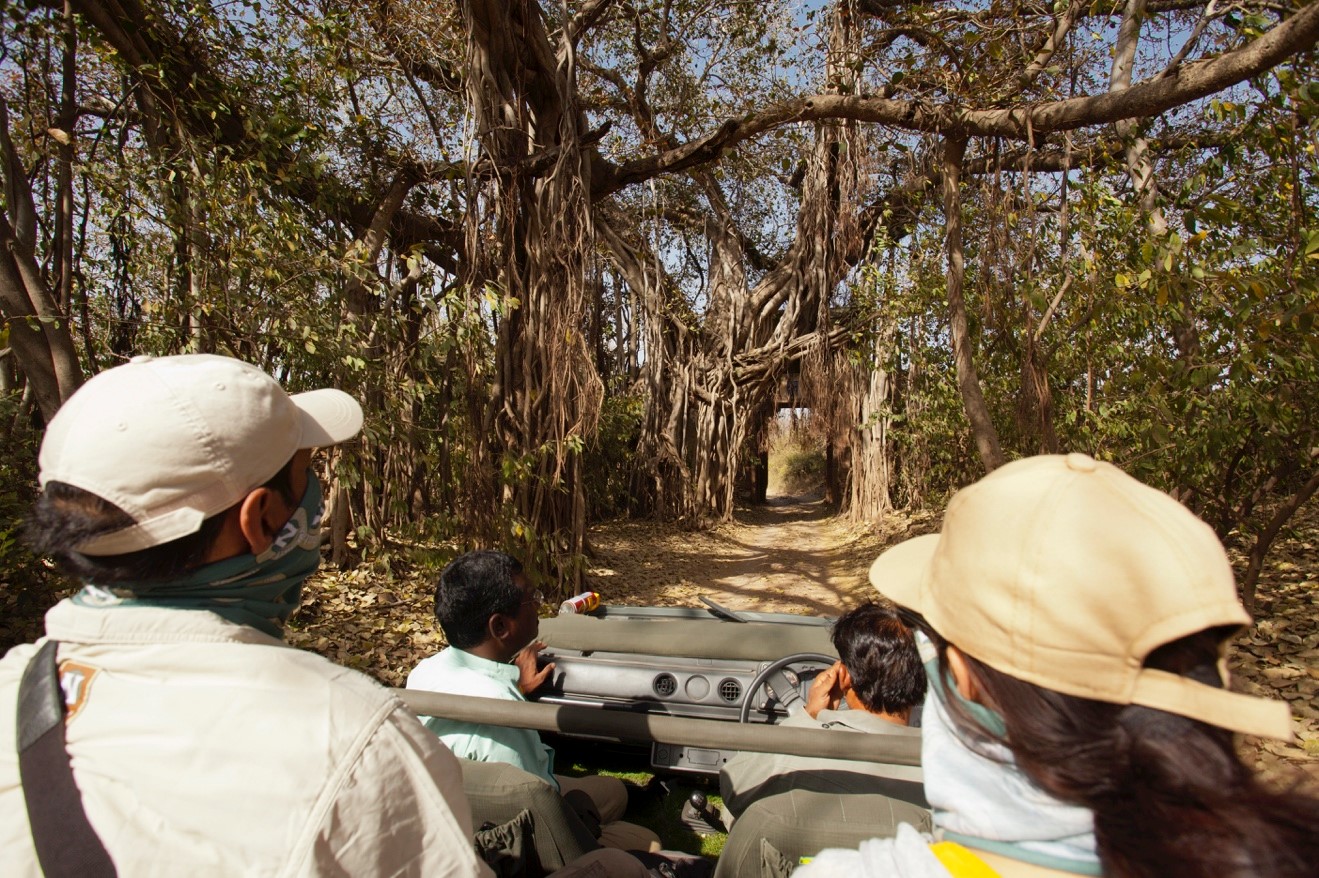
While the time flew by as we traversed the forest, with an ever-vigilant eye towards the wilds around us for tiger tracks, and an ear open for the indicative warning calls of other wildlife, it was also a timeless experience that still lingers in my thoughts each day following. The jungle itself was as mysterious and enigmatic as it’s feline inhabitants.
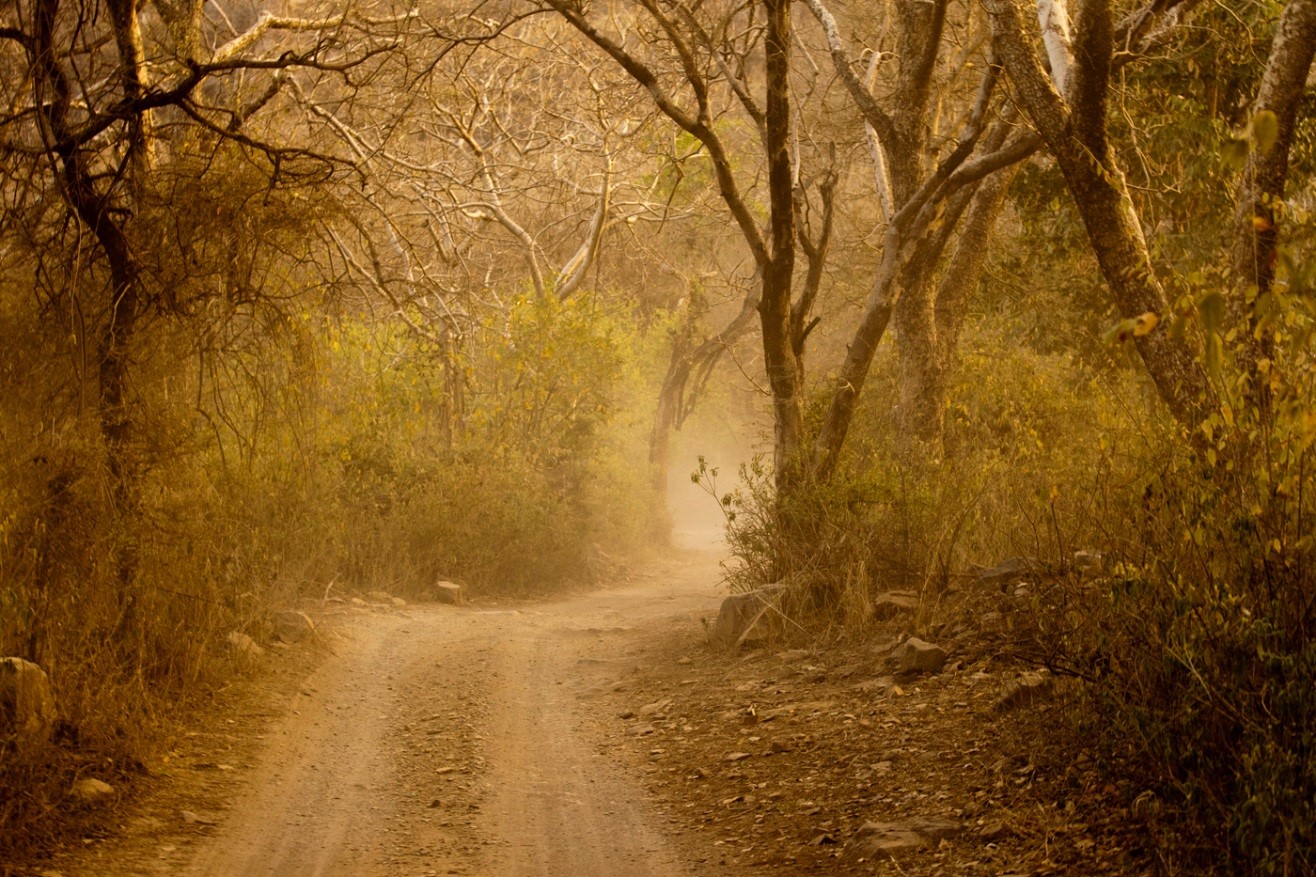
The moment we spotted her was another moment I’ll never forget. A mother tigress with two nearly grown sons sat underneath a shade bush, tail flipping in the air for a moment, head up briefly, then back down again to wait out the afternoon sun. We waited with her…
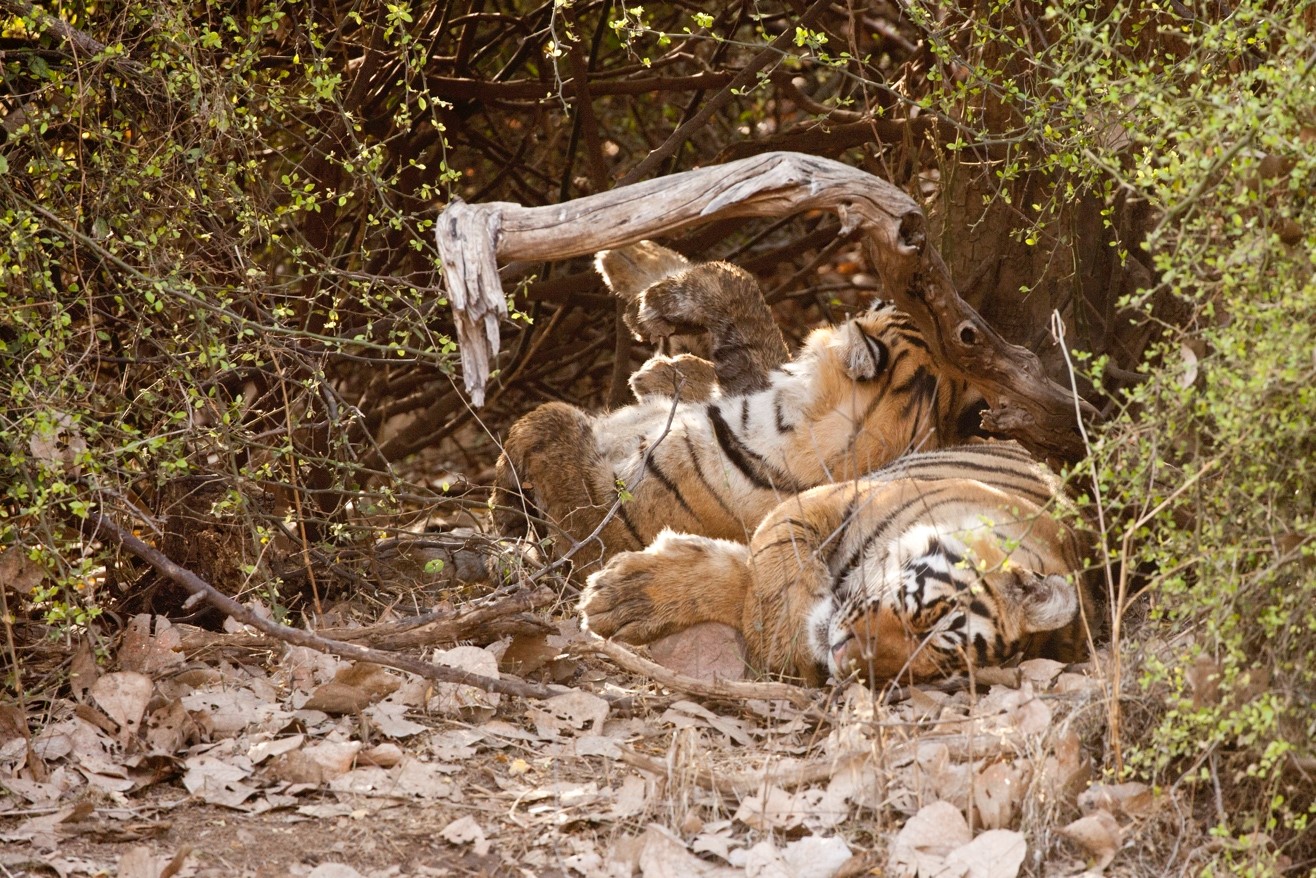
As the day went on cooler temperatures began to settle in and they became active. At first it was the mother, sitting up, welcoming the day (to her the day was just beginning) with a big yawn, followed by one of the nearly-adult cubs giving us an incredible show by slowing walking down to the nearby water for a drink.
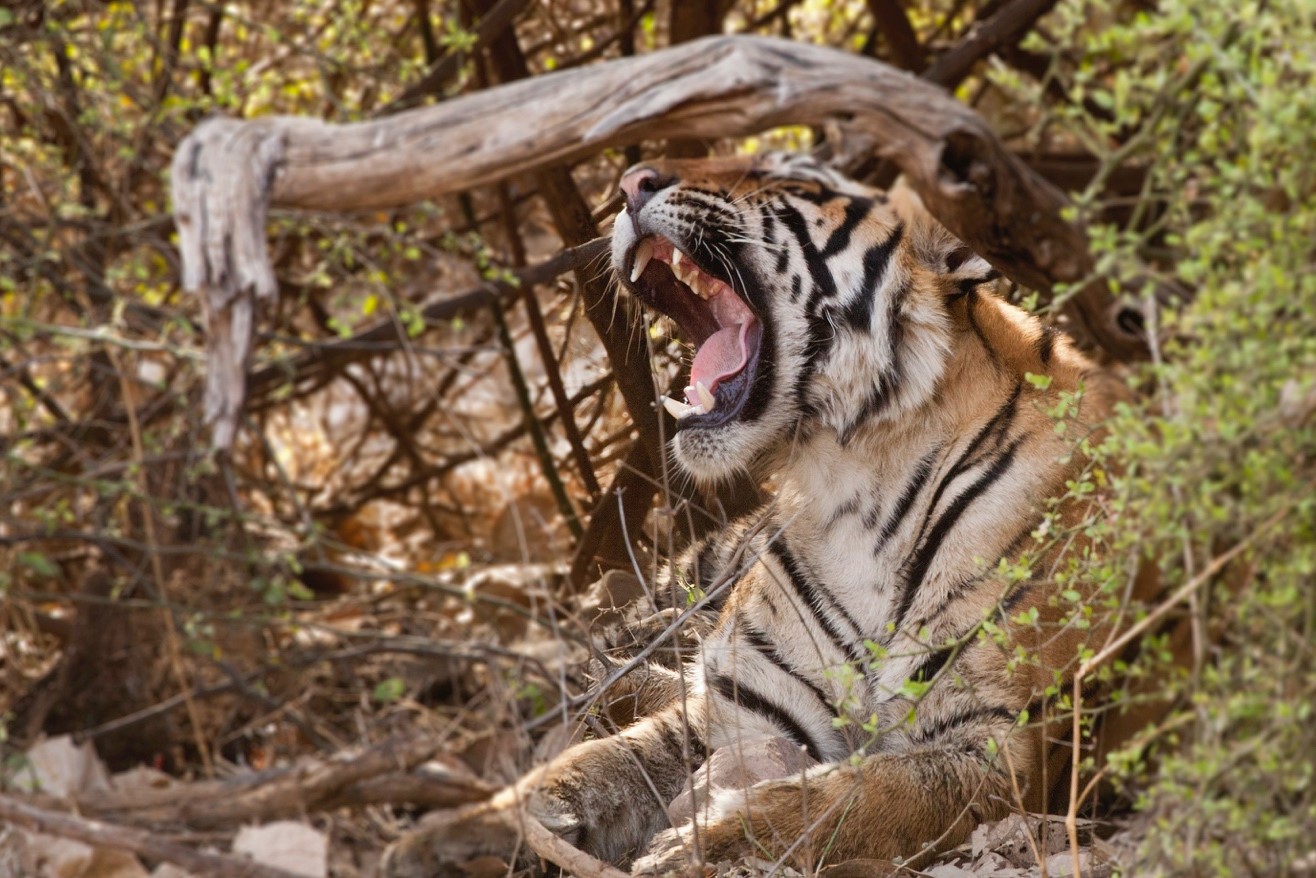
He lapped up water for nearly five minutes, giving us incredible unimpeded views and photographs of this special moment.
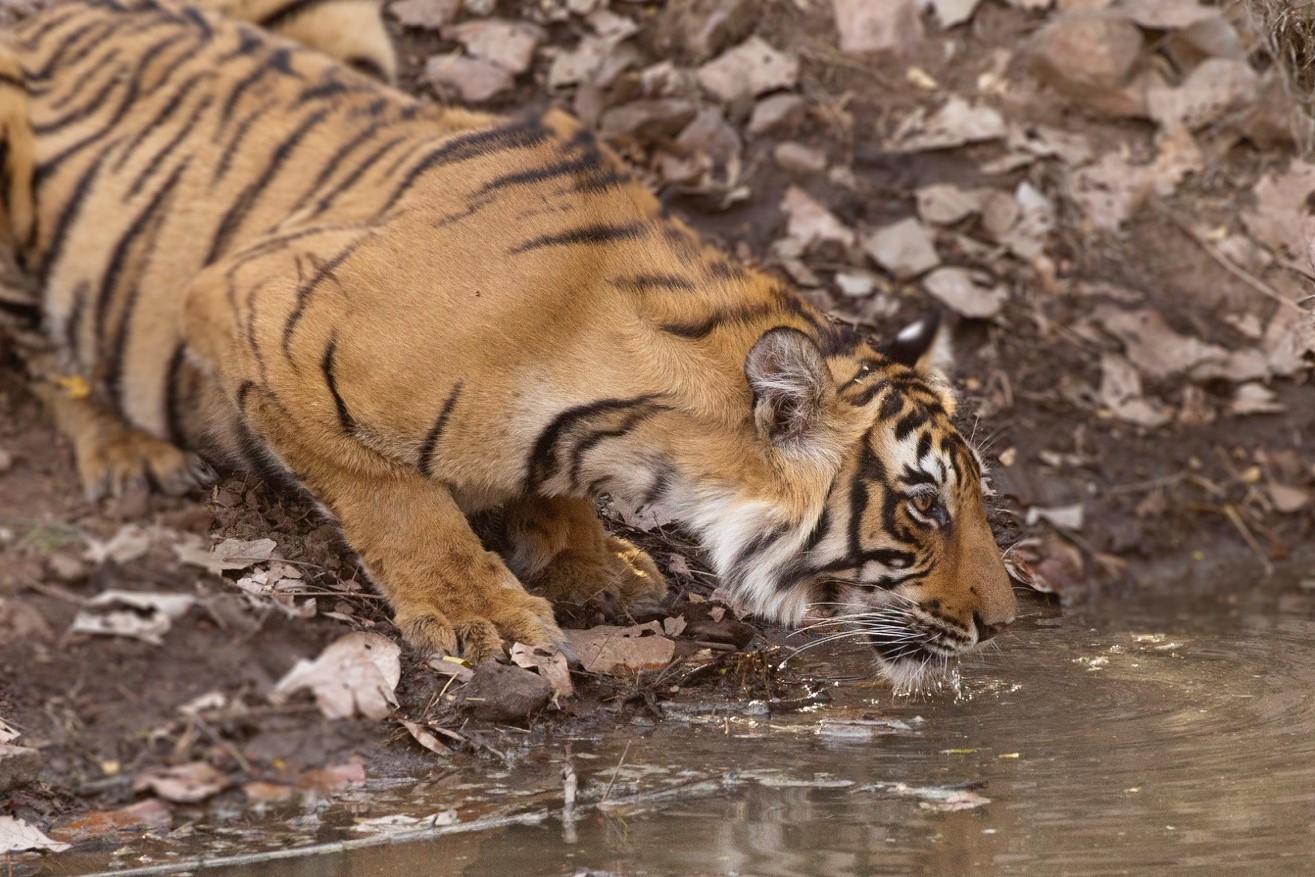
I’ve been on many African safaris and seen many of the world’s large cats and other charismatic predators, but there is truly something special about the tiger. Not only is it the world’s largest of the great cats, but also one of the most elusive, and for that the privilege of seeing one will no doubt contend for one of my most humbling and memorable wildlife experiences of my life.
All the best,
Court
6 Comments

Sara Ell
May 1, 2017 at 8:46 am

Court Whelan, Ph.D.
July 13, 2017 at 10:51 am

Joseph
January 19, 2019 at 12:49 pm

Court Whelan, Ph.D.
February 3, 2019 at 1:42 pm

Khalid Sheikh
July 29, 2019 at 11:57 am

Court Whelan, Ph.D.
August 21, 2019 at 10:17 am
This kind of photography is definitely WAY outside my experience, so this is an absolutely fascinating account—thanks so much for sharing! Love the action shots and the way you’ve captured them looking so natural and at ease in their home.
A lot of these kinds of photos can end up looking like they were obviously taken at a wildlife park, but that’s not the case at all here! You’ve really moved in close and given these guys a lot of personality, while still incorporating a sense of the environment. What size telephoto did you use for these, if you don’t mind me asking? It can be so hard to get that front-line perspective on these kinds of shoots where you’re sitting up away from your subject.
How long did you “stake out” these guys, so to speak? As previously mentioned I’m not very familiar with wildlife photography, so I’m curious exactly how long you have to wait around for shots like these.
Hey Sara, thanks for the comment! These were taken on a Canon 100-400 lens, with a full frame camera body. Amazingly, we didn’t have to wait too long to get these shots! Maybe an hour or two of driving, and then all of the sudden – Tigers! Truly amazing. So glad you like the photos!
Great Photos and great tips. I will be there in 40 more days. So question, I your last article you spoke of using the smallest f stop. Would you please give me an example of this.
Many thanks and happy travels,
Joseph
Great to hear, Joseph! You’re going to love it. When I talk about small f-stop, that could be anywhere from f/2.8 (ideal) to f/5.6. As you probably know, different lenses (usually corresponding to size and price) give you different maximum apertures. The bigger and more costly lenses will allow you to shoot at, say, f/2.8 or f/4 at 300-400mm (or more). However, most lenses (especially zoom telephotos) give you a maximum aperture (i.e., smallest f/number) of f/5.6. Thus, shoot at the smallest f/number to get the best blur in the background. Hope this helps!
Simply magnificent. Great work. Keep it up and take good care of yourself.
thanks, Khalid!